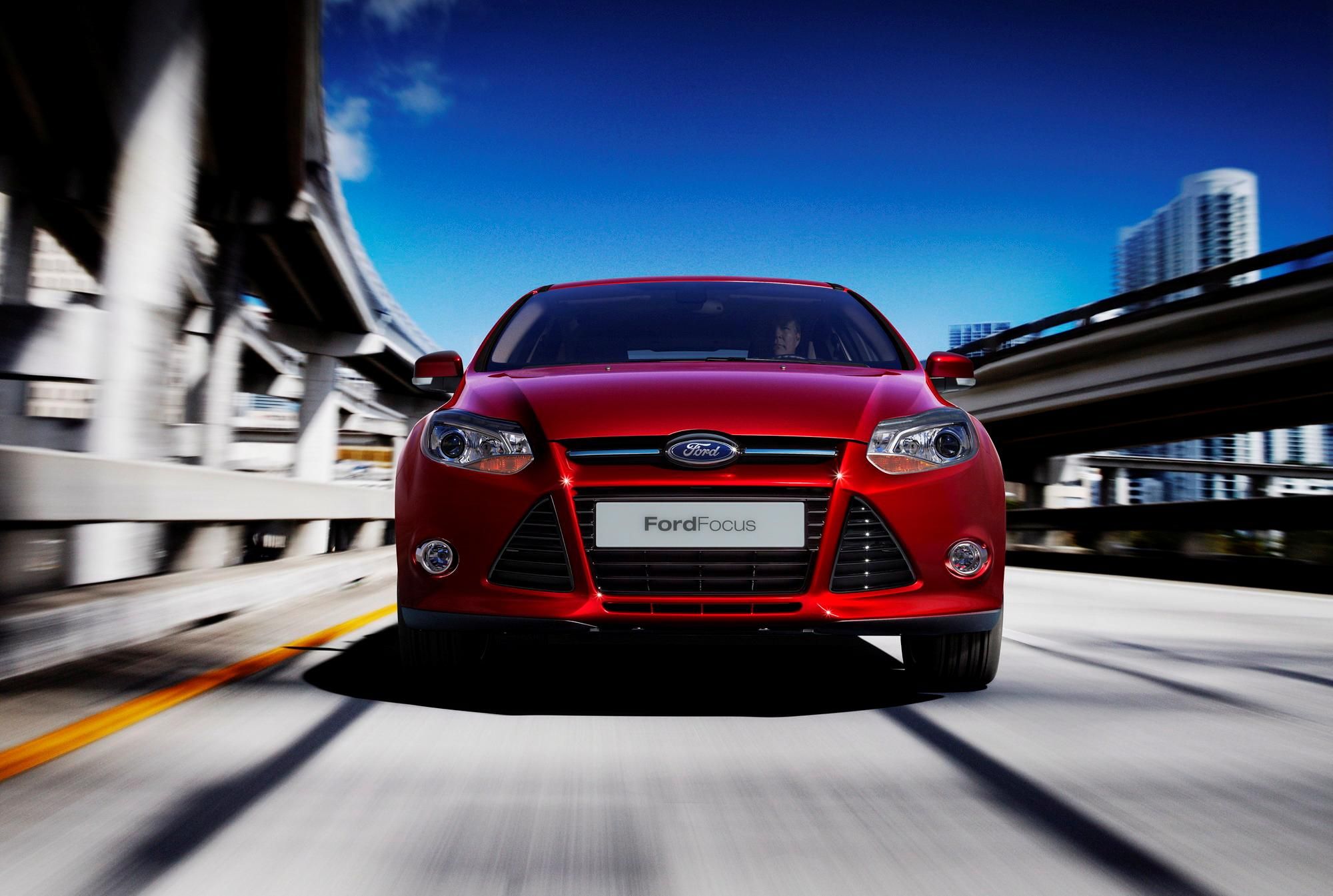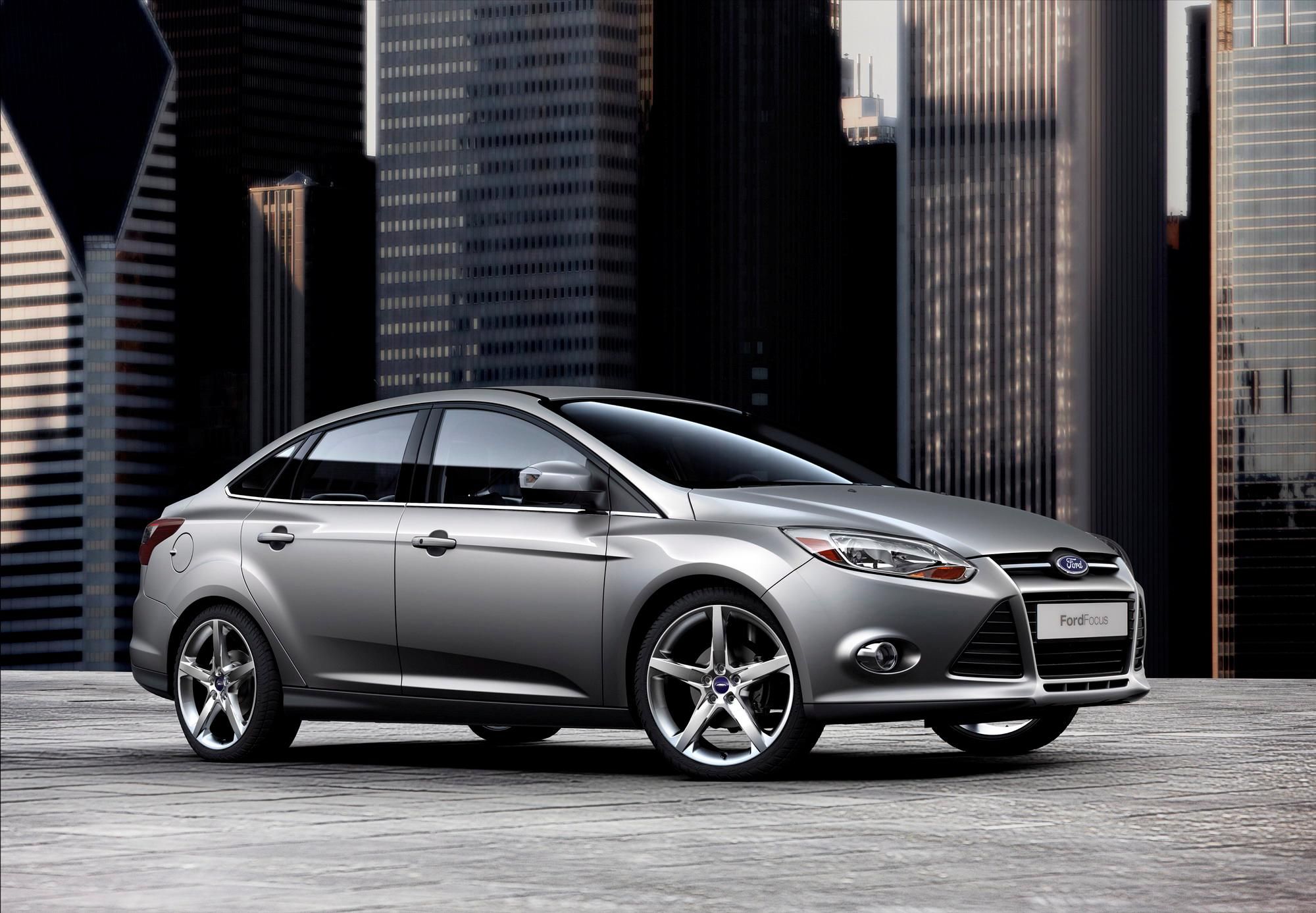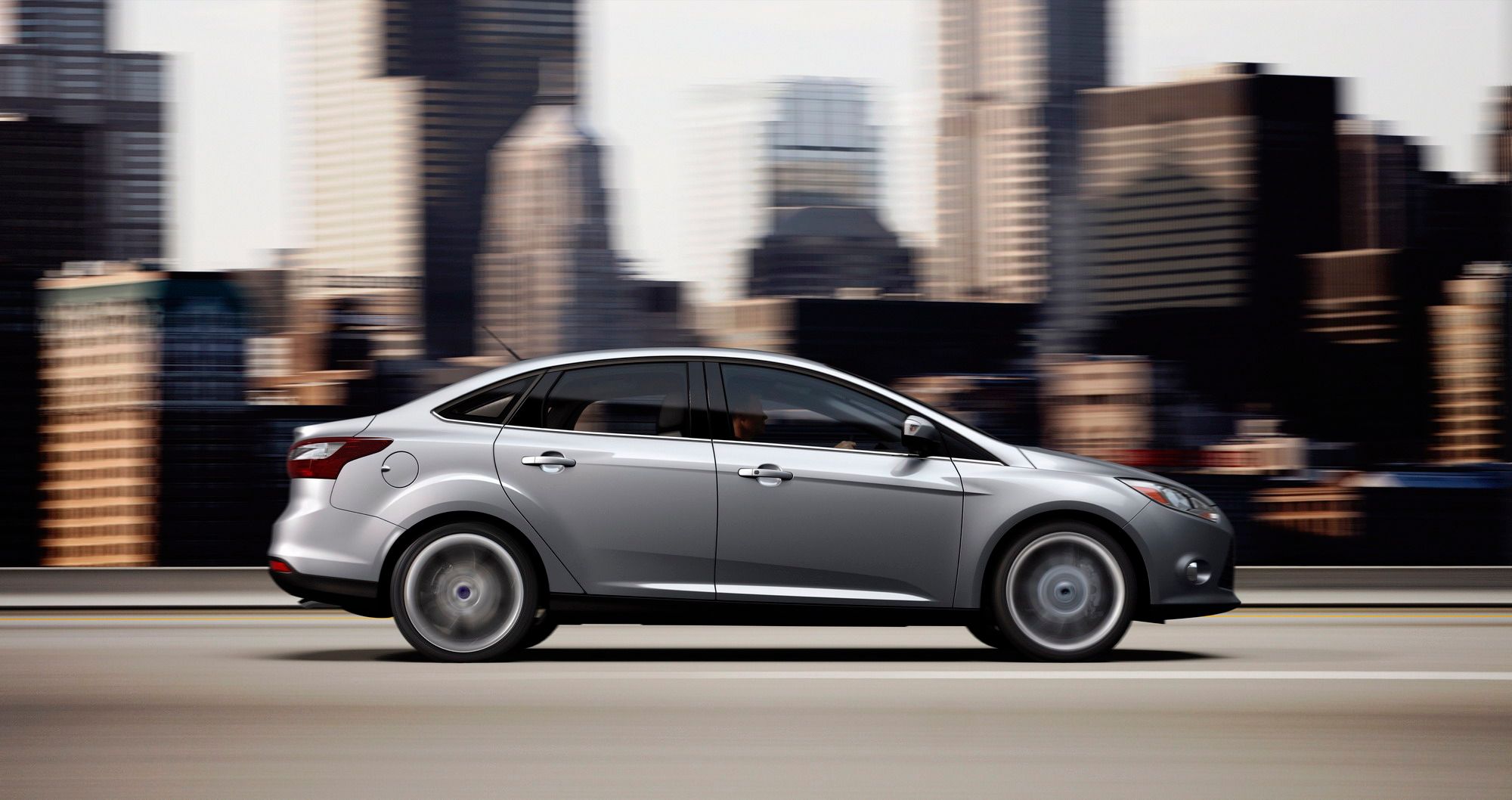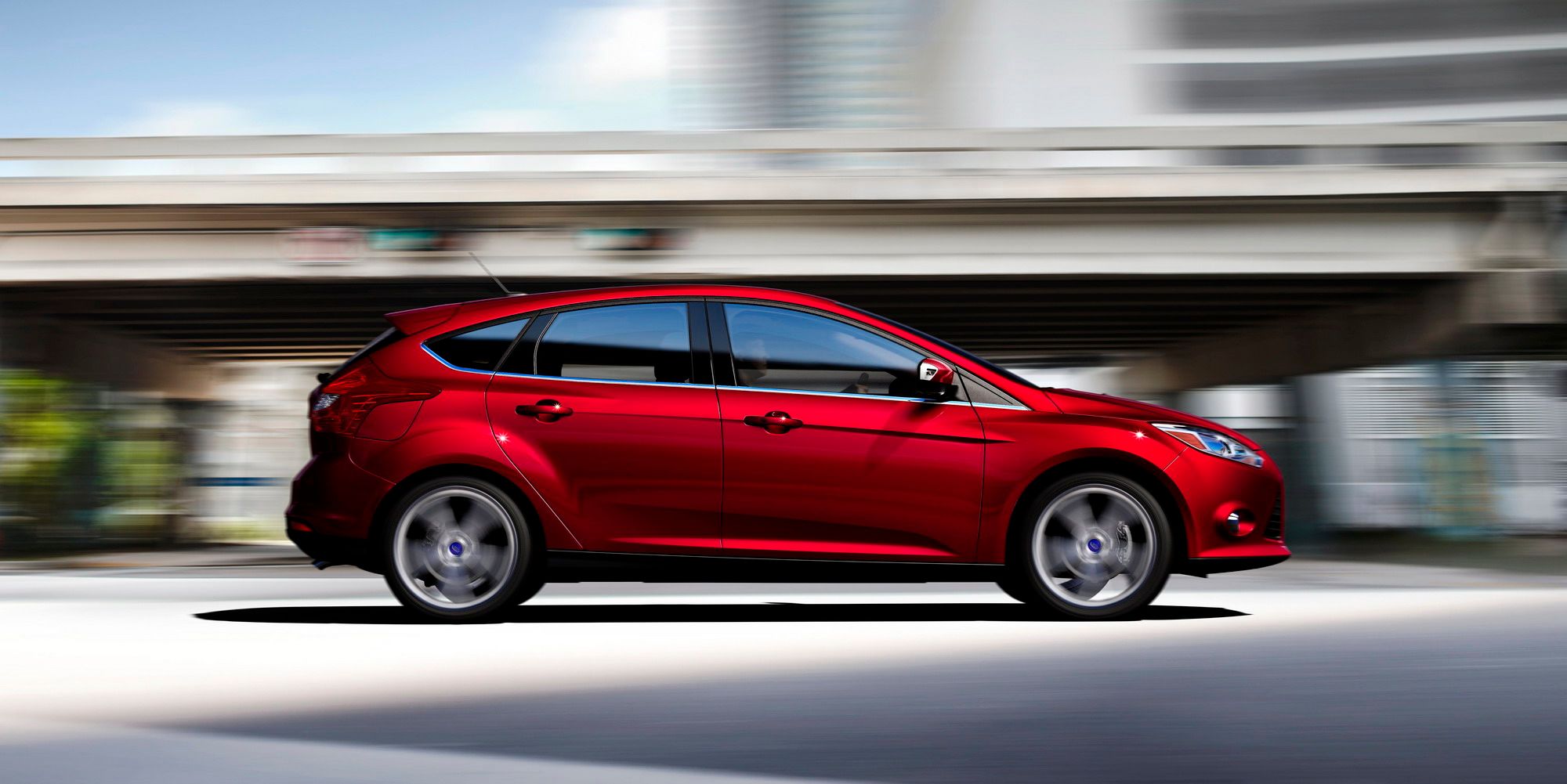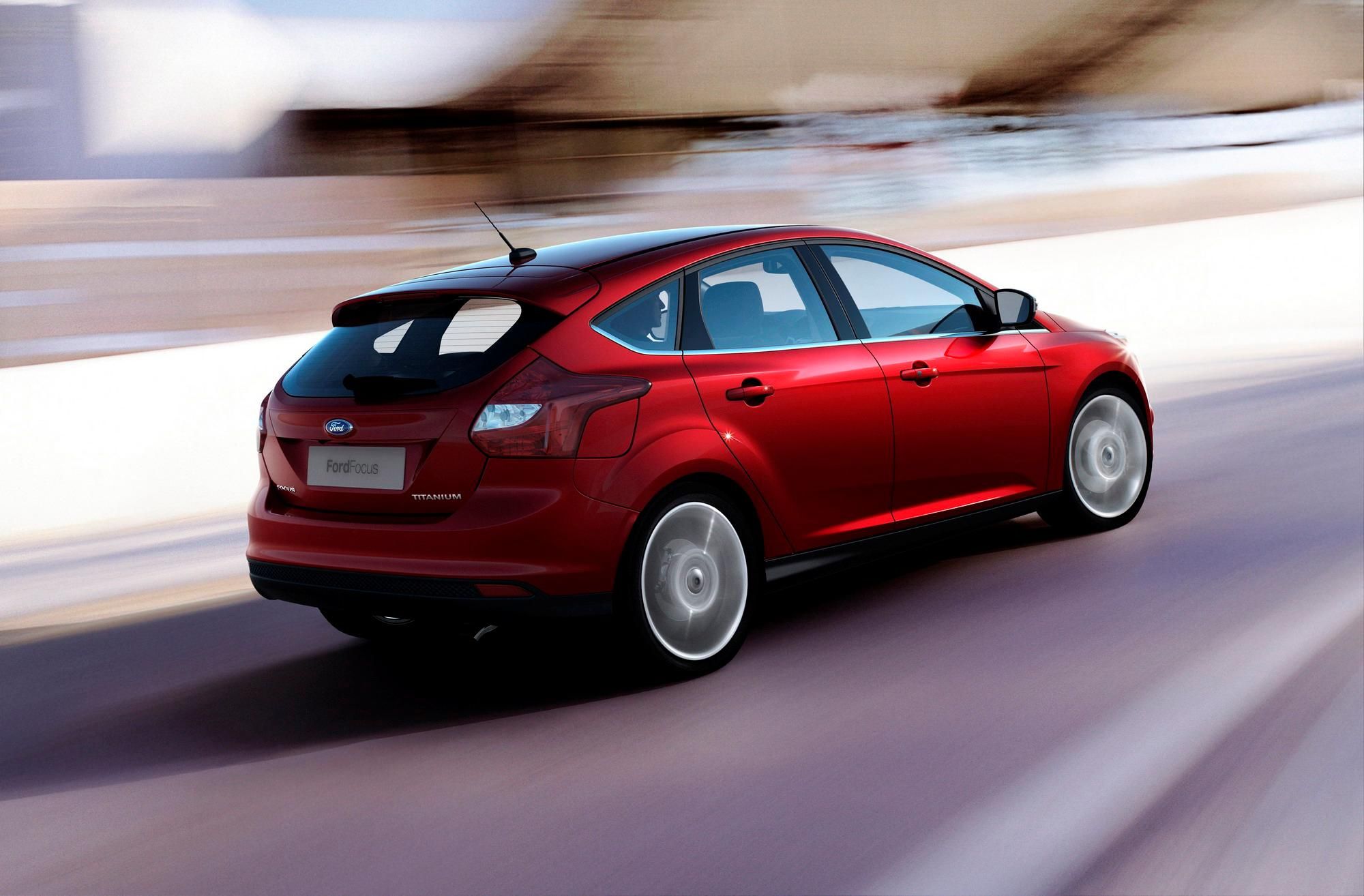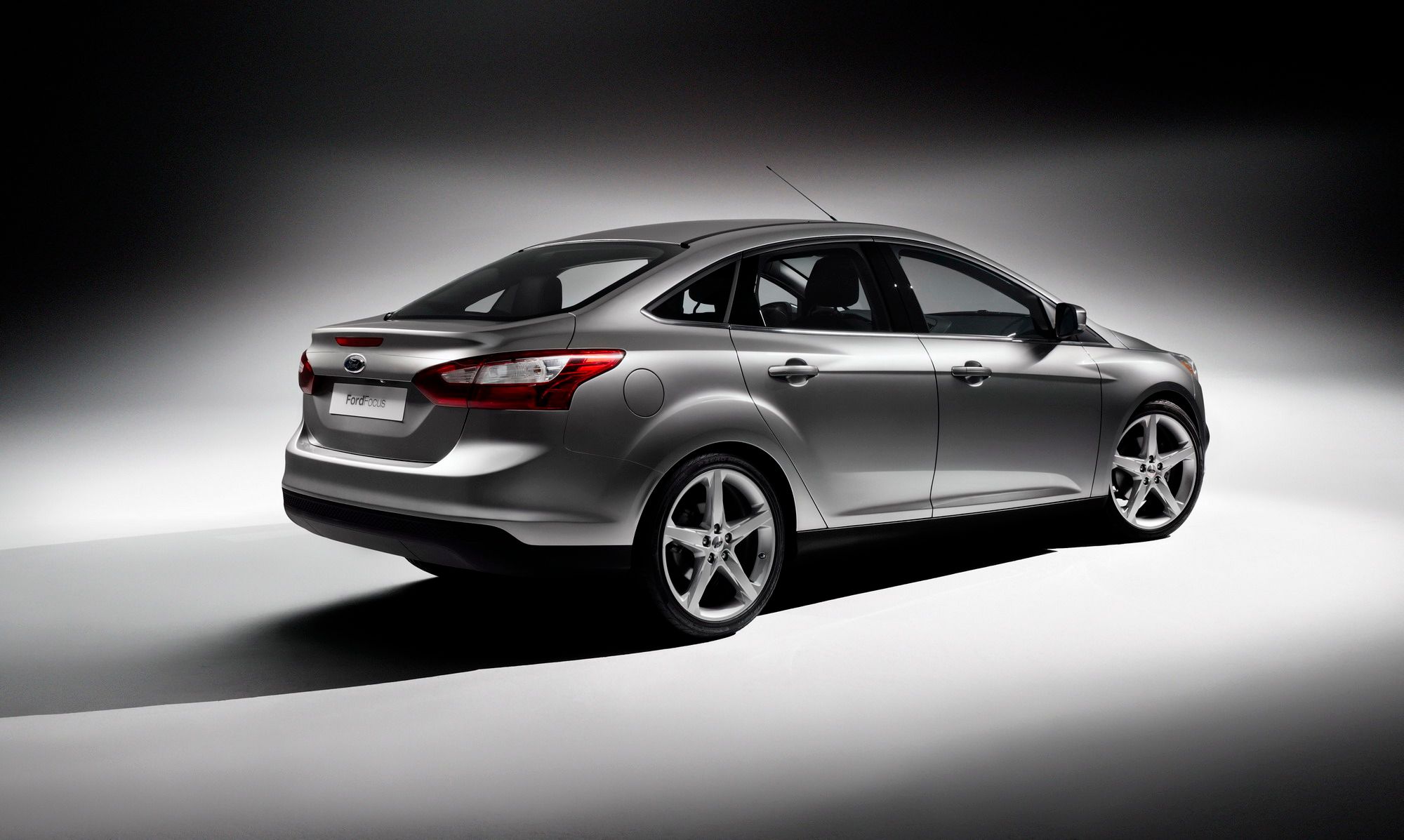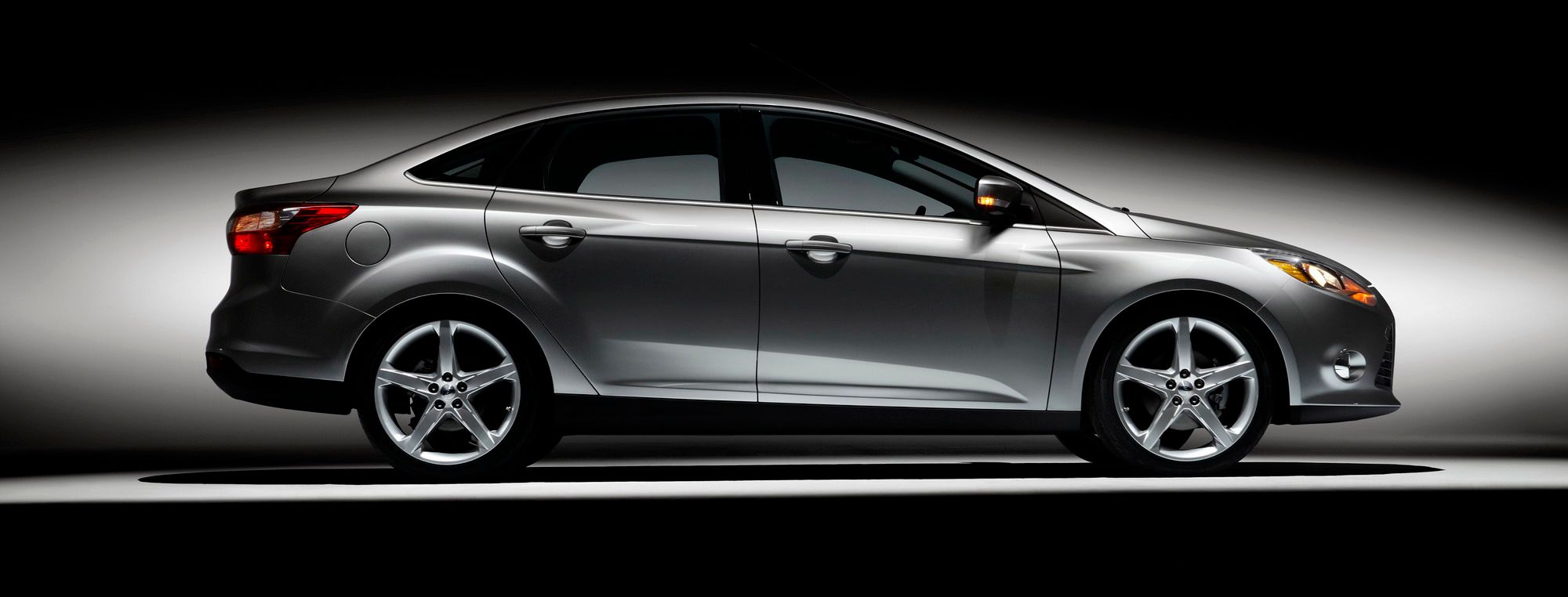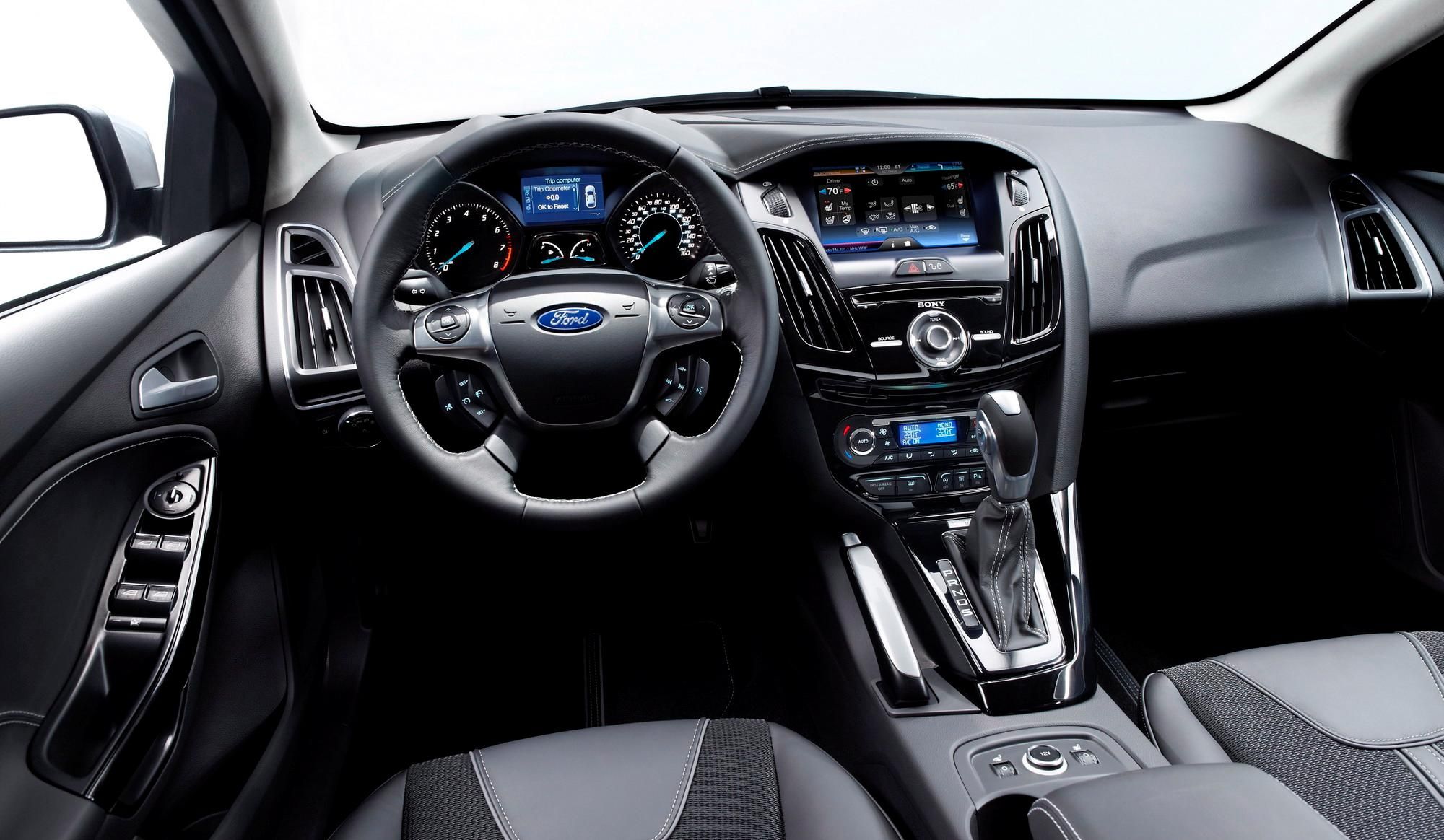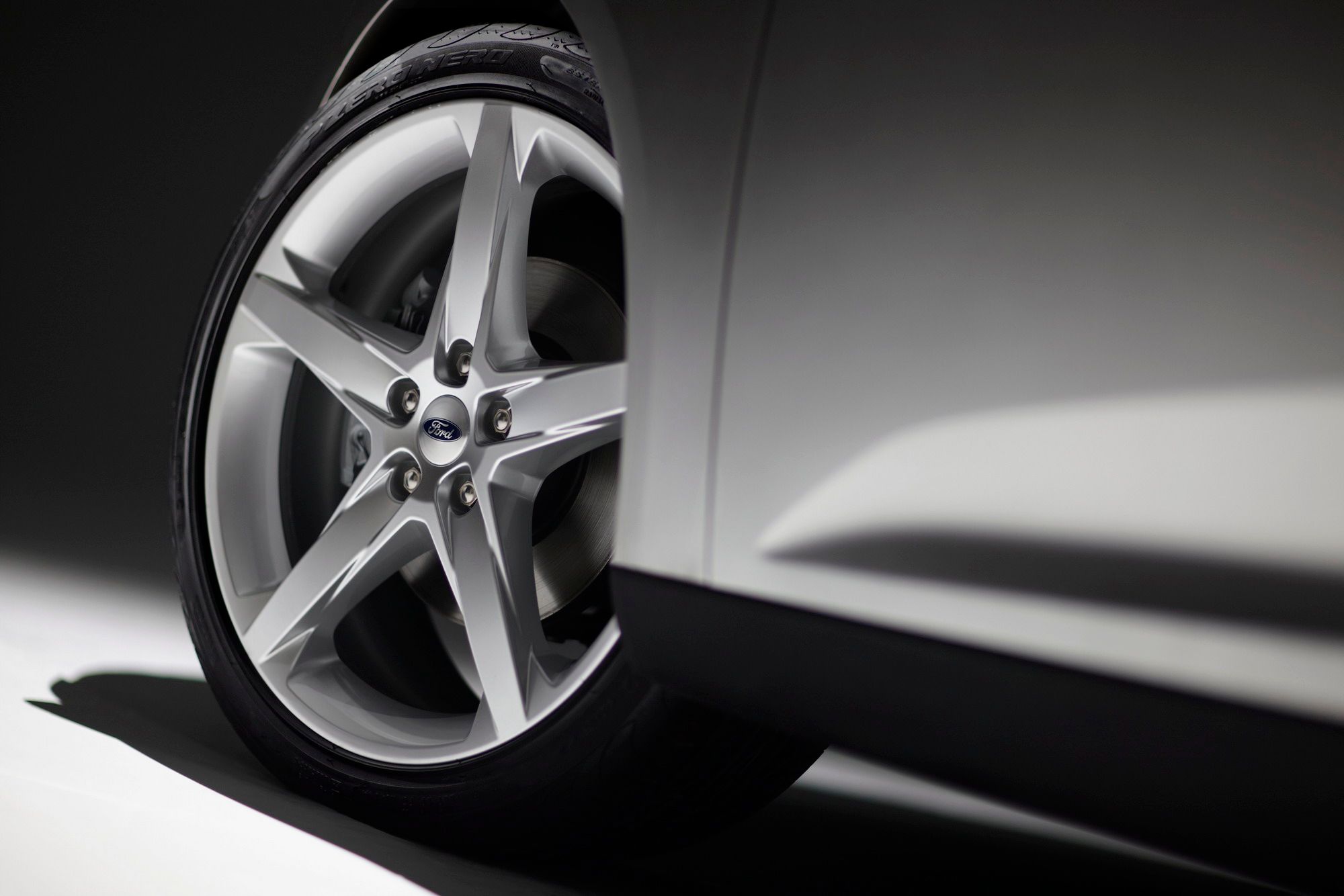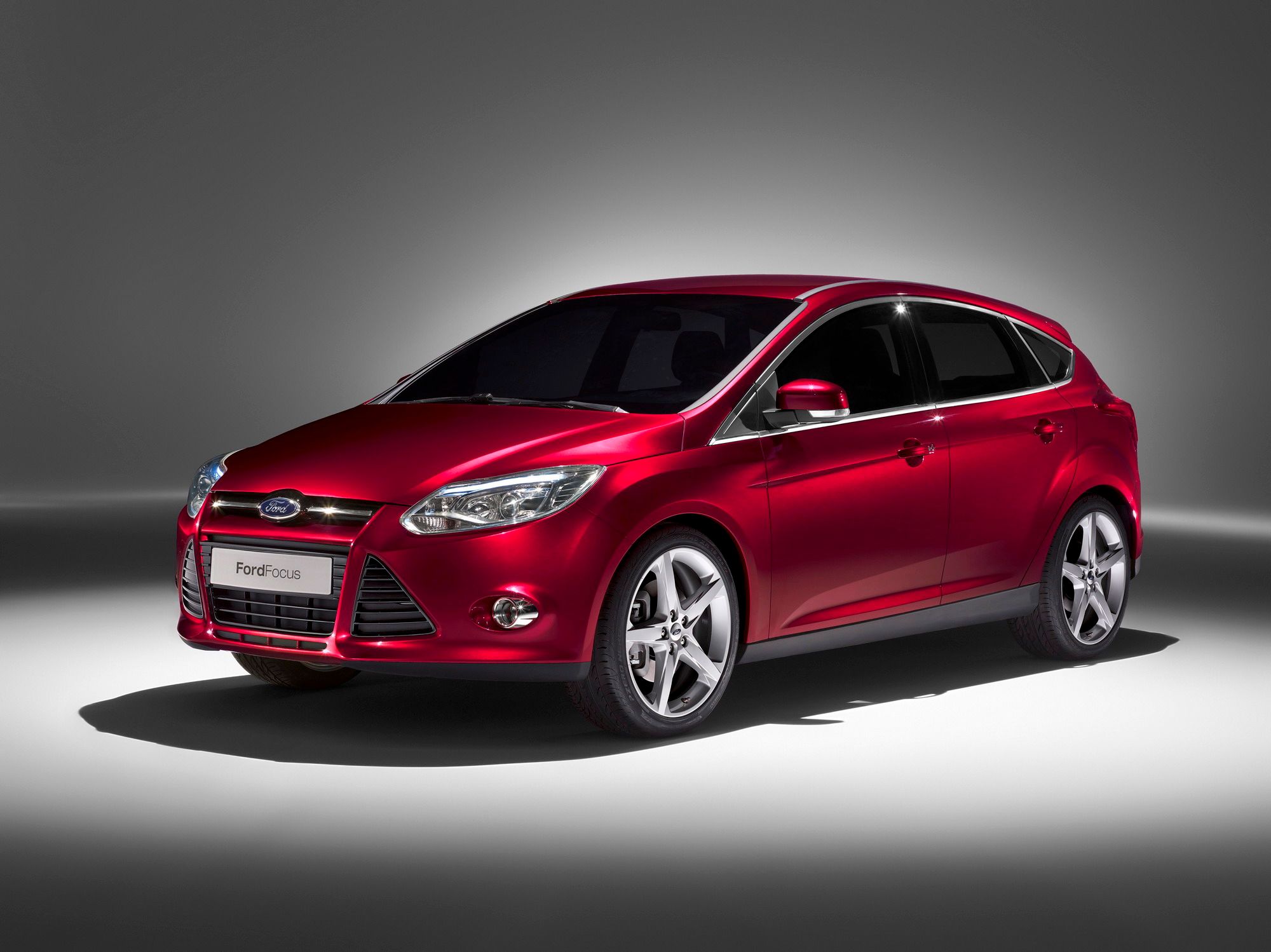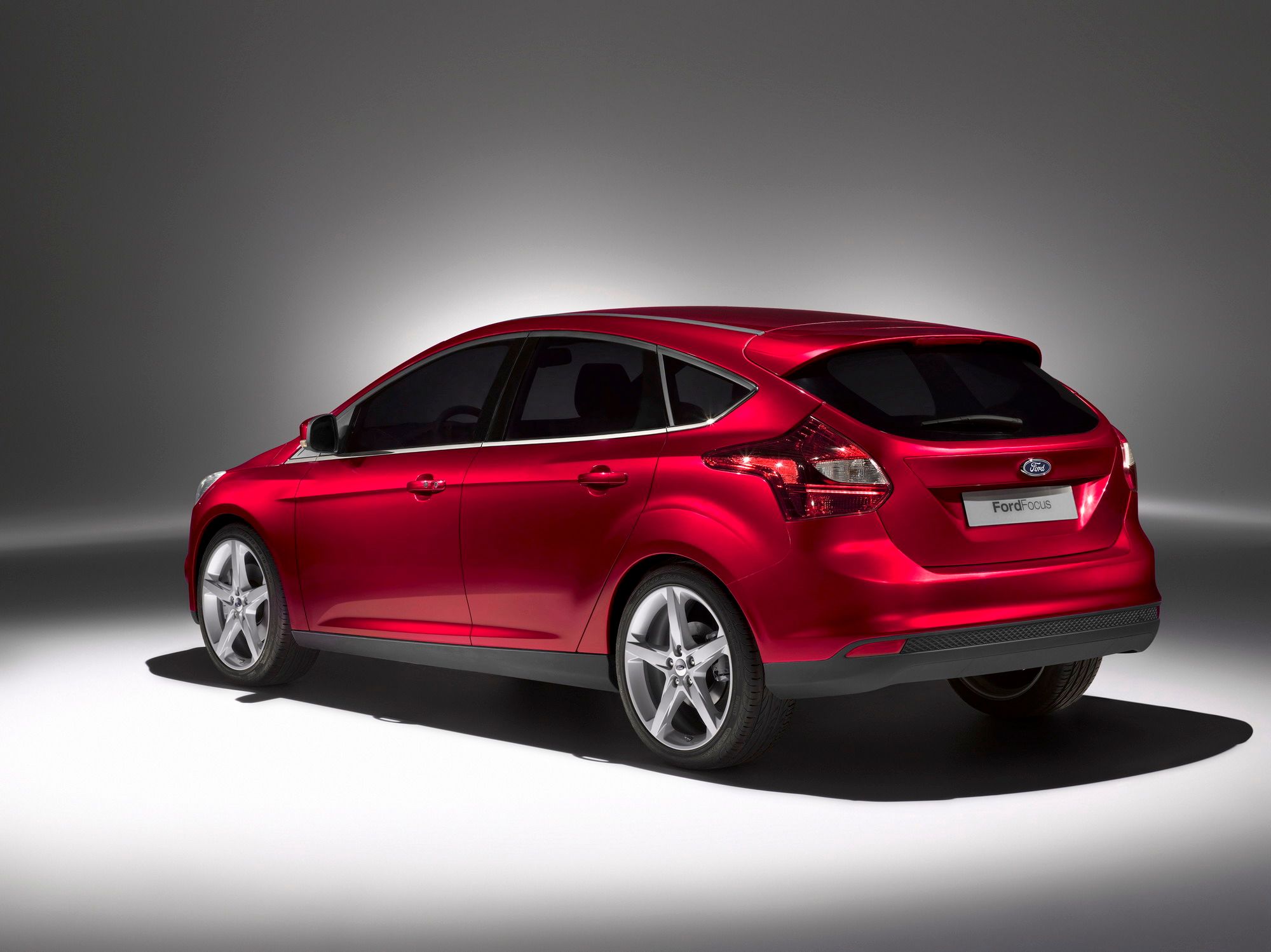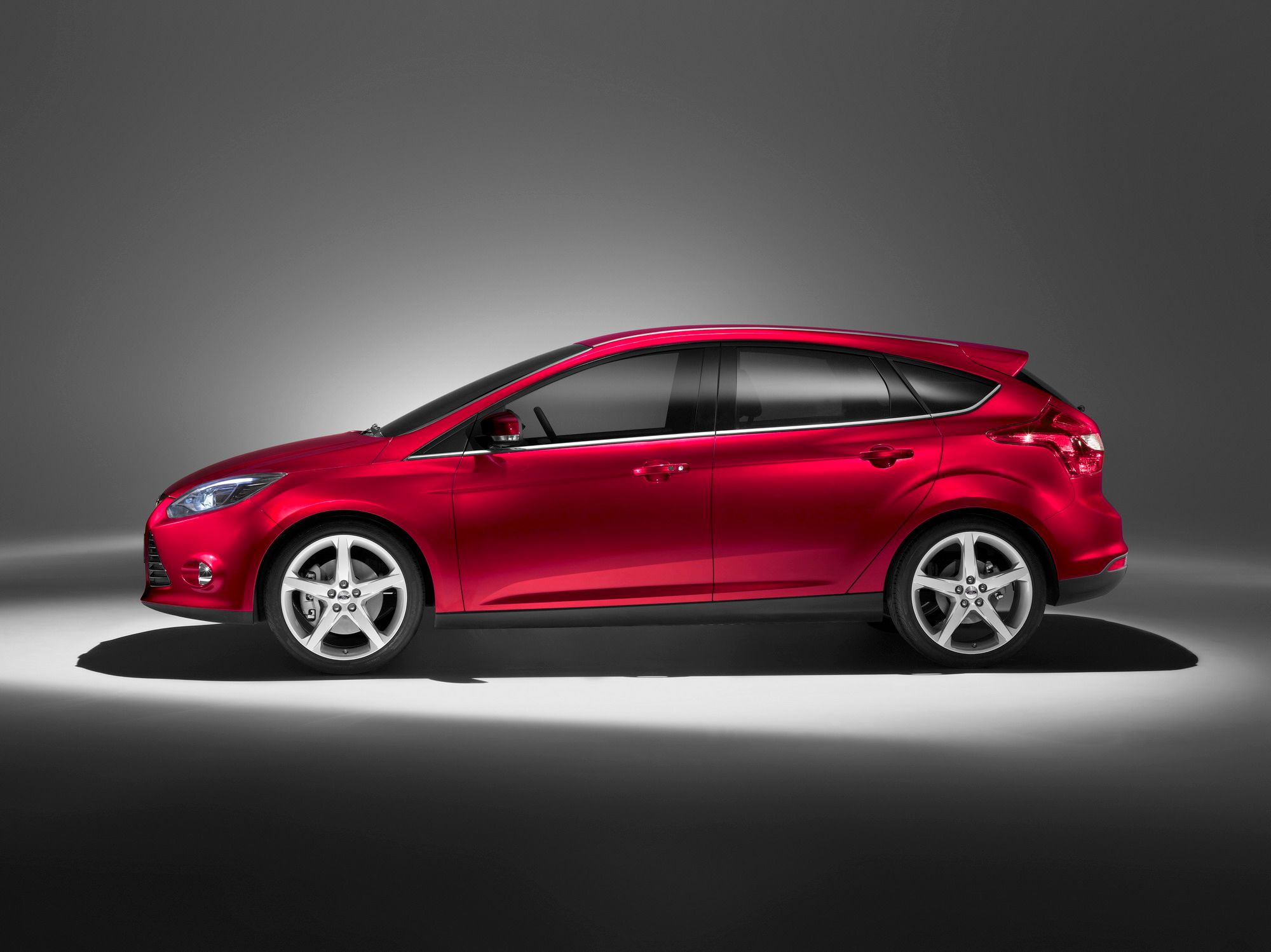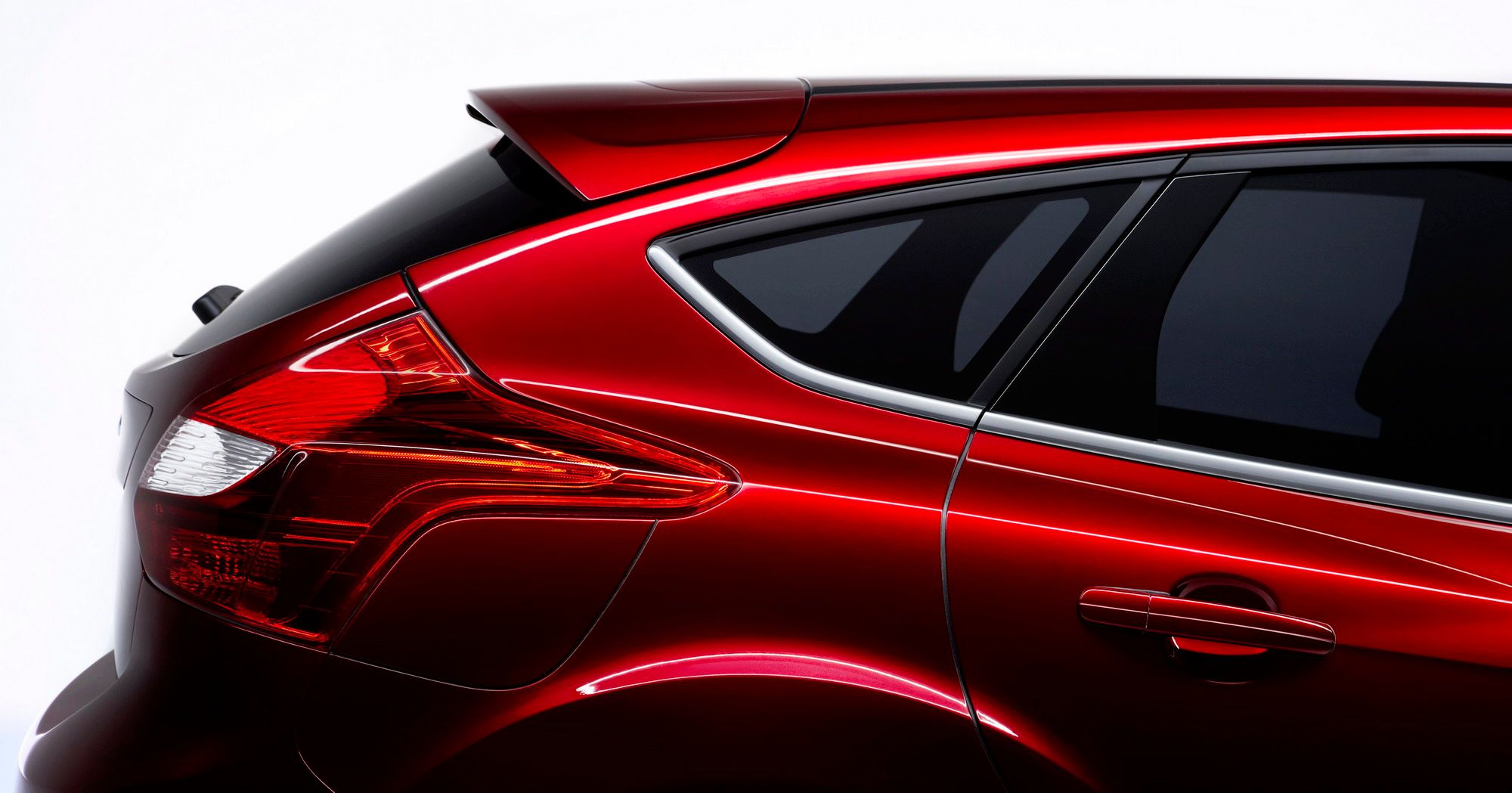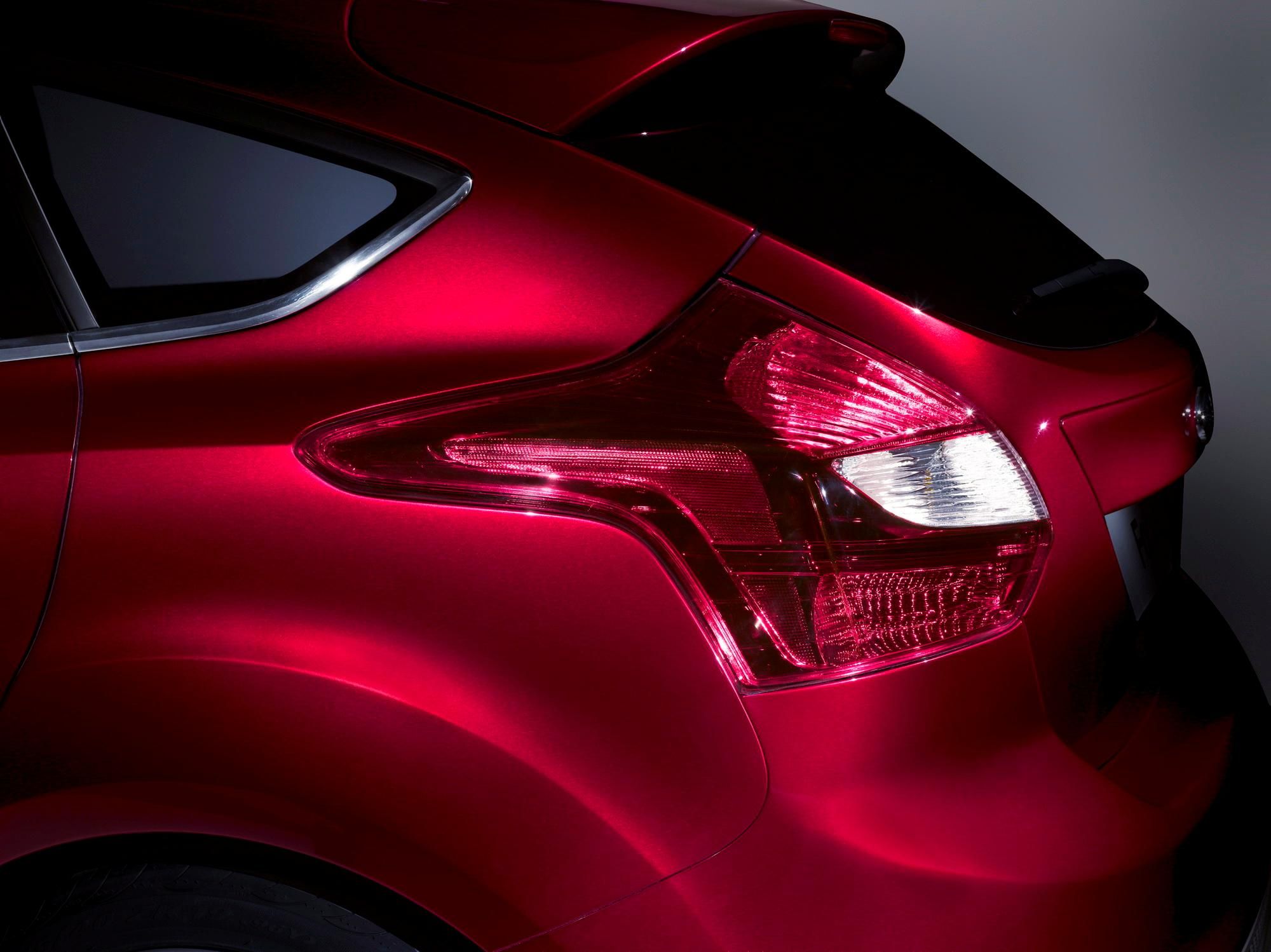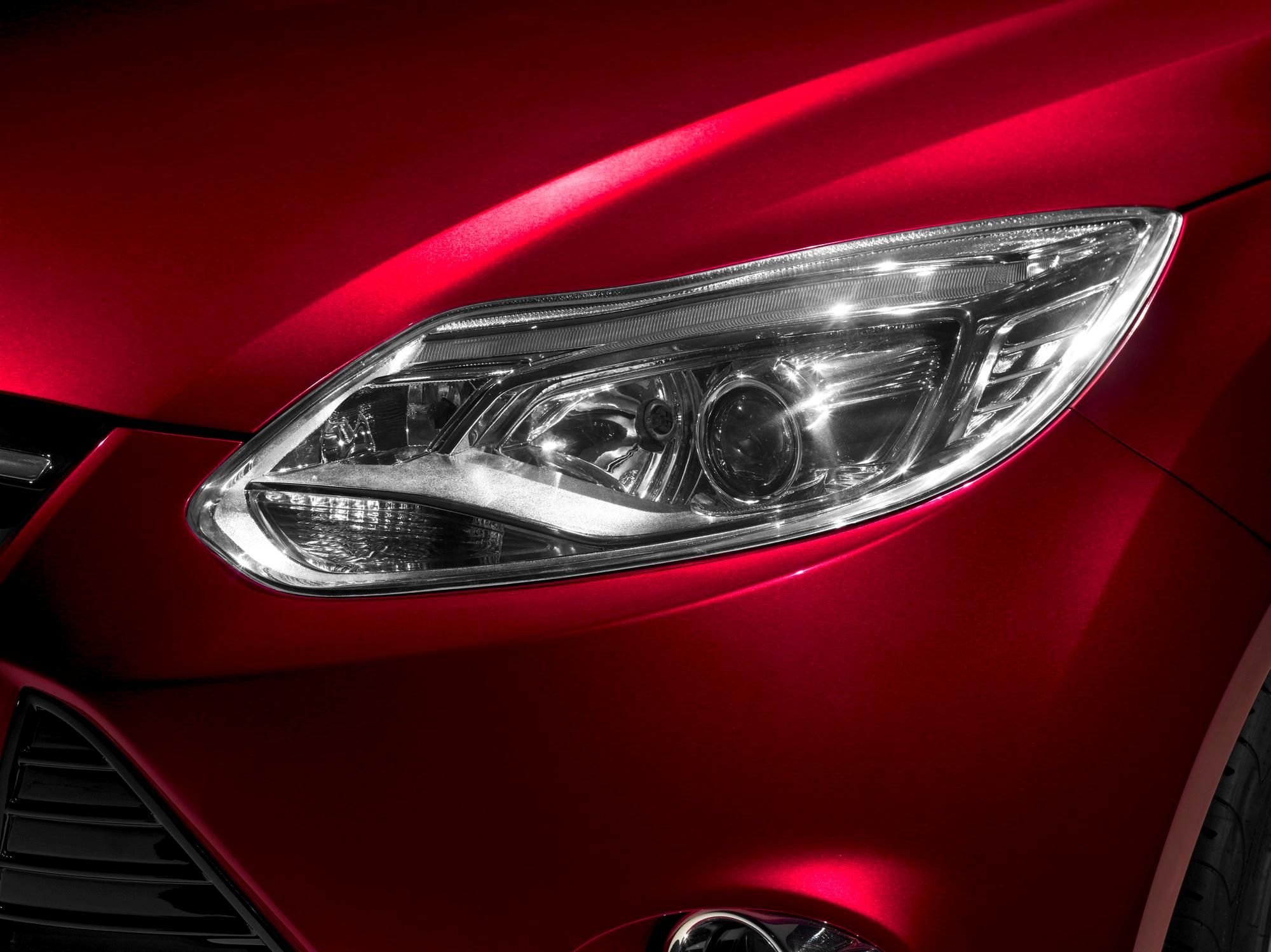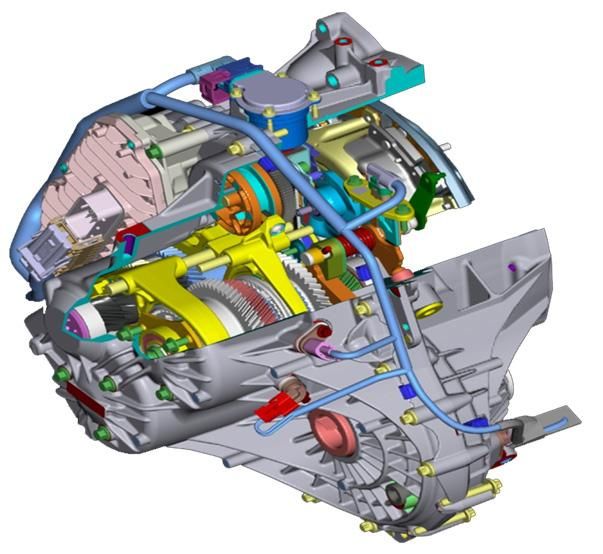When the Ford Focus was first introduced the new car was a smash hit in Europe with a slew of Cosworth tuned and RS->ke438 spec Foci available for overseas rally enthusiasts who harked for the return of the old Sierra Escort special something to dream about. However with the blue oval's latest recent focus (no pun intended) on the smaller offerings in their lineup, Ford is making the Focus a global vehicle for economical and practical reasons. The American automaker from Dearborn unveiled the latest generation Ford Focus at their home show, the 2010 North American International Auto Show in Detroit.
Ford's new Focus is built on top of the new global C-segment platform, a unit which replaces the three different substructures that are currently in use. The small car builder is shooting for the stars and are dedicated to moving more than 2 Million units by 2012. Mark Fields should have no problem achieving his goal, with the 2011 Focus being the latest evolution of Ford's European "Kinetic" design language. A dialect of car speak that is well trained in the art of tooling out attractive compacts, which is why the new Focus features a large trapezoidal front fascia, bulging wheel arches, swooping large lamp clusters and a set of bold hips. All begging the eye to take a longer look.
Powered by a fuel efficient 2.0 Liter four cylinder engine that makes 155 HP and 145 lb-ft of torque, made with Ford's patented Twin Independent Variable Camshaft Timing (Ti-VCT) and direct injection (DI) as well as a gas sipping dual-clutch PowerShift transmission. The Focus will be sold as both a sedan and a hatchback after they go into production almost simultaneously in both Europe and North America later on in 2010 and destined to arrive in dealerships in early 2011.
Full details in the press release after the jump.
2011 Ford Focus
- Make: Array
- Model: 2011 Ford Focus
- [do not use] Vehicle Model: Array
Press release
The next-generation Ford Focus revealed today at the North American International Auto Show delivers on the company’s promise to offer more products people really want while truly leveraging its global product and manufacturing strengths.
Up to 10 new models will be built on the new global C-segment platform, which replaces three platforms currently in production regionally. By 2012, the new platform will account for more than 2 million units of volume, providing Ford unprecedented scale and an opportunity to offer to customers around the world an array of new technologies and product features usually reserved for premium vehicles.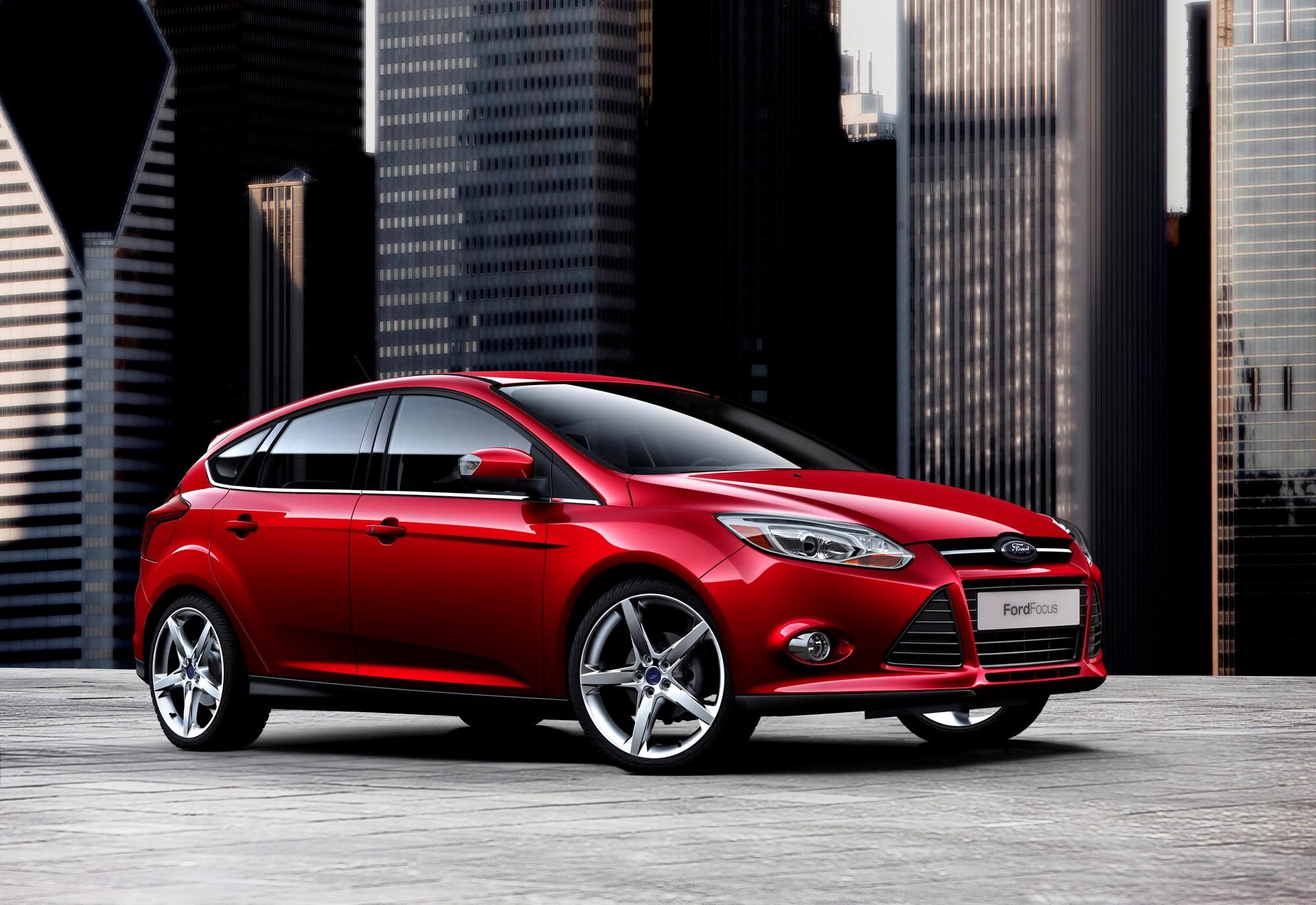 “Ford’s new C-sized family will be the strongest demonstration yet of how we’re harnessing the company’s global resources to deliver real customer benefits,” said Derrick Kuzak, Ford’s group vice president of Global Product Development. “The next-generation Focus is our C-segment flagship, offering technology you don’t expect in a C-car, feature content you would not expect in a C-car, and craftsmanship, materials and interior quietness you would not expect in a C-car. The scale we’re generating makes it possible to deliver all that.”
“Ford’s new C-sized family will be the strongest demonstration yet of how we’re harnessing the company’s global resources to deliver real customer benefits,” said Derrick Kuzak, Ford’s group vice president of Global Product Development. “The next-generation Focus is our C-segment flagship, offering technology you don’t expect in a C-car, feature content you would not expect in a C-car, and craftsmanship, materials and interior quietness you would not expect in a C-car. The scale we’re generating makes it possible to deliver all that.”
Globally, Ford expects its C-car volumes to double, from about 1 million units in 2008 to more than 2 million units by 2012. Plus, the new Focus is expected to be sold in 122 countries around the world.
Ford’s manufacturing base is rapidly expanding and reconfiguring to deliver that scale. The company already has confirmed that products developed from the new C-car platform will be manufactured in the United States, Germany, Spain, Russia and China. Other production sites will follow.
The new Ford Focus will reach aggressively to achieve scale, with production beginning almost simultaneously in Europe and North America in late 2010 and vehicles set to reach dealerships in early 2011. It will launch in 2012 in the Asia Pacific and Africa region, where new assembly plant construction is under way in China to lay the groundwork for next-generation products that are truly global in reach.
Global product for global demand
The new Focus is positioned to appeal to a major – and growing – international customer segment. One in four vehicles sold worldwide is a C-segment vehicle. C-cars are the heart of the European car market, a mainstay in Asia-Pacific and growing in importance in The Americas.
Ford’s C-car plan reflects these market forces:
- U.S. small car sales – combined B- and C-segments – grew from about 14 percent of the market in 2004 to more than 21 percent now. Within five years, the C-segment alone could reach 25 percent of the U.S. market, according to Ford forecasters.
- In Europe, C-cars are an even stronger force, representing 30 percent of sales in a highly diverse segment.
- The segment accounts for approximately 25 percent of passenger car sales across the Asia Pacific and Africa region.
Developing appealing products that meet global customer expectations is a key facet of the ONE Ford strategy championed by Ford Motor Company President and CEO Alan Mulally. The heart of the strategy is to maximize the leverage of Ford’s product development investments. 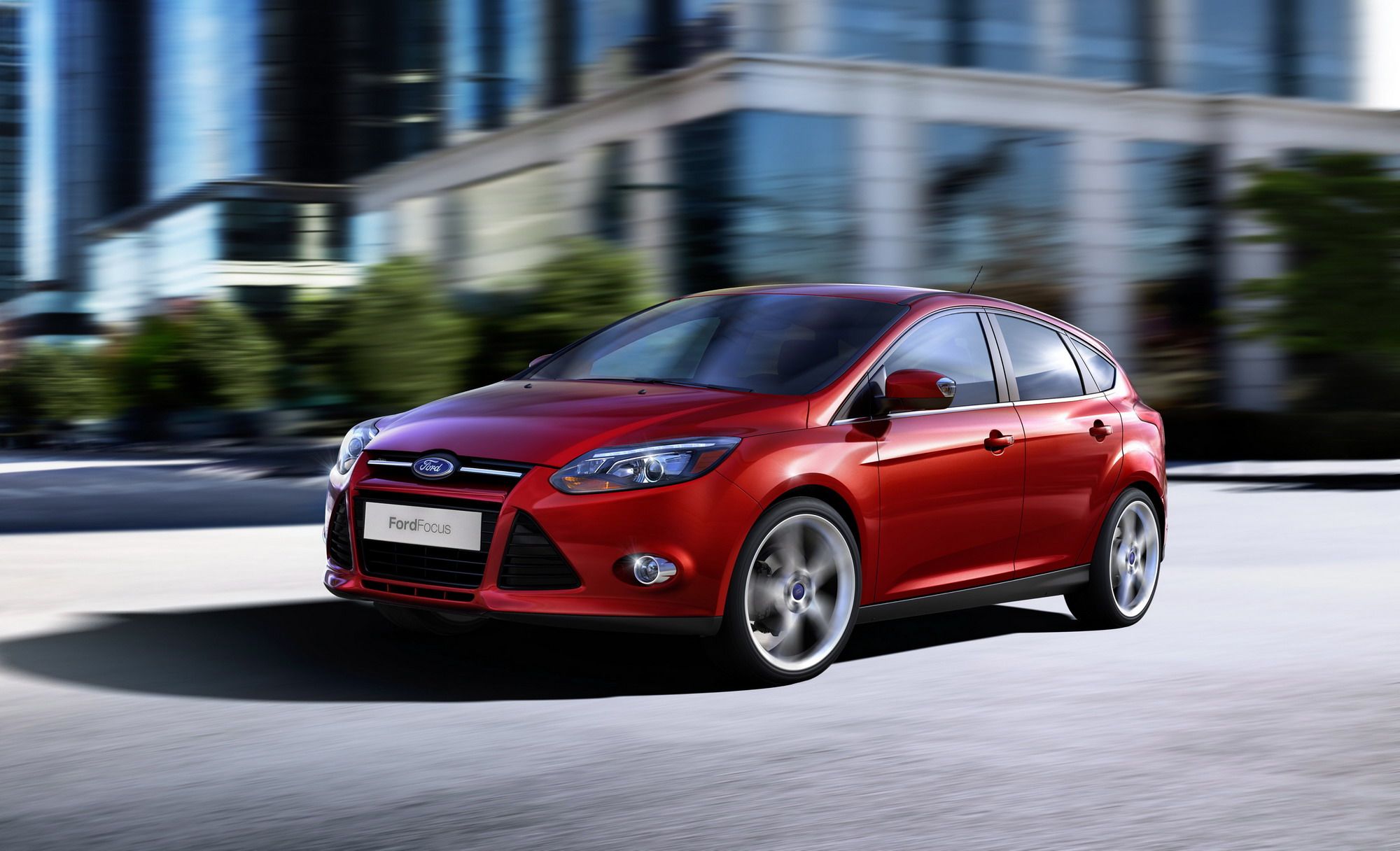 The new C-car family from Ford will advance the ONE Ford strategy by offering a truly global product, with high degrees of commonality – about 80 percent – across all regions.
The new C-car family from Ford will advance the ONE Ford strategy by offering a truly global product, with high degrees of commonality – about 80 percent – across all regions.
Customer research from The Americas to China has validated Ford’s move to transform its product development operations from a regional basis – typical of full-range, global automakers such as Toyota and Volkswagen – to a truly global basis. For example, during research for the next-generation Ford Focus, customer feedback from all three major regions of the world favored the same kinetic design, eliminating the need for regional product differences and strengthening the mandate for a world-class, truly international product.
Even norms about body style preference from country to country are less steadfast today. Ford expects the five-door hatchback body style to grow from 25 to 40 percent of volume in North America with this Focus. Four-door sedans have been the dominant body style in the U.S. market, but hatchbacks are growing in popularity as customers begin to appreciate their interior space efficiency and flexibility, particularly when combined with craftsmanship, materials and quietness that can be delivered in a vehicle such as the next-generation Focus.
Five-door models also are growing in popularity among C-car customers in China, traditionally another sedan stronghold.
The shapes of platform efficiency
The new Focus models are part of a vanguard of C-size vehicles coming from Ford. The company’s strategy to achieve profitable growth globally from this segment is built on creating a highly flexible platform as the basis for a wide range of products.
Ford’s C-segment strategy reflects strong demand for MAVs (multi-activity vehicles) and other body styles in addition to traditional sedan and hatchback configurations. Not only does this result in more customer choice than ever, it also helps Ford better leverage its product development assets globally.
Ford’s new C-car portfolio capitalizes on customer trends driving diversification of body styles within segments. The breadth of the Ford C-segment family will be crucial to meeting growing global demand for C-sized vehicles without the one-shape-fits-all approach.
The new Ford C-MAX, revealed at the 2009 Frankfurt Motor Show as the first glimpse of the Ford C-segment family, showcases the platform’s flexibility.
C-MAX – which will be built in Valencia, Spain – will be available in all European markets by late 2010. The five-seat C-MAX departs from usual MAV thinking in Europe by adopting a sportier feel with a stylish passenger-car look, while the Grand C-MAX, Ford’s first seven-seat C-sized MAV, features twin sliding doors and innovative seat design to provide outstanding space and flexibility. A version of the seven-seat Grand C-MAX is also scheduled to launch in North America in late 2011 as a promised “whitespace” entry.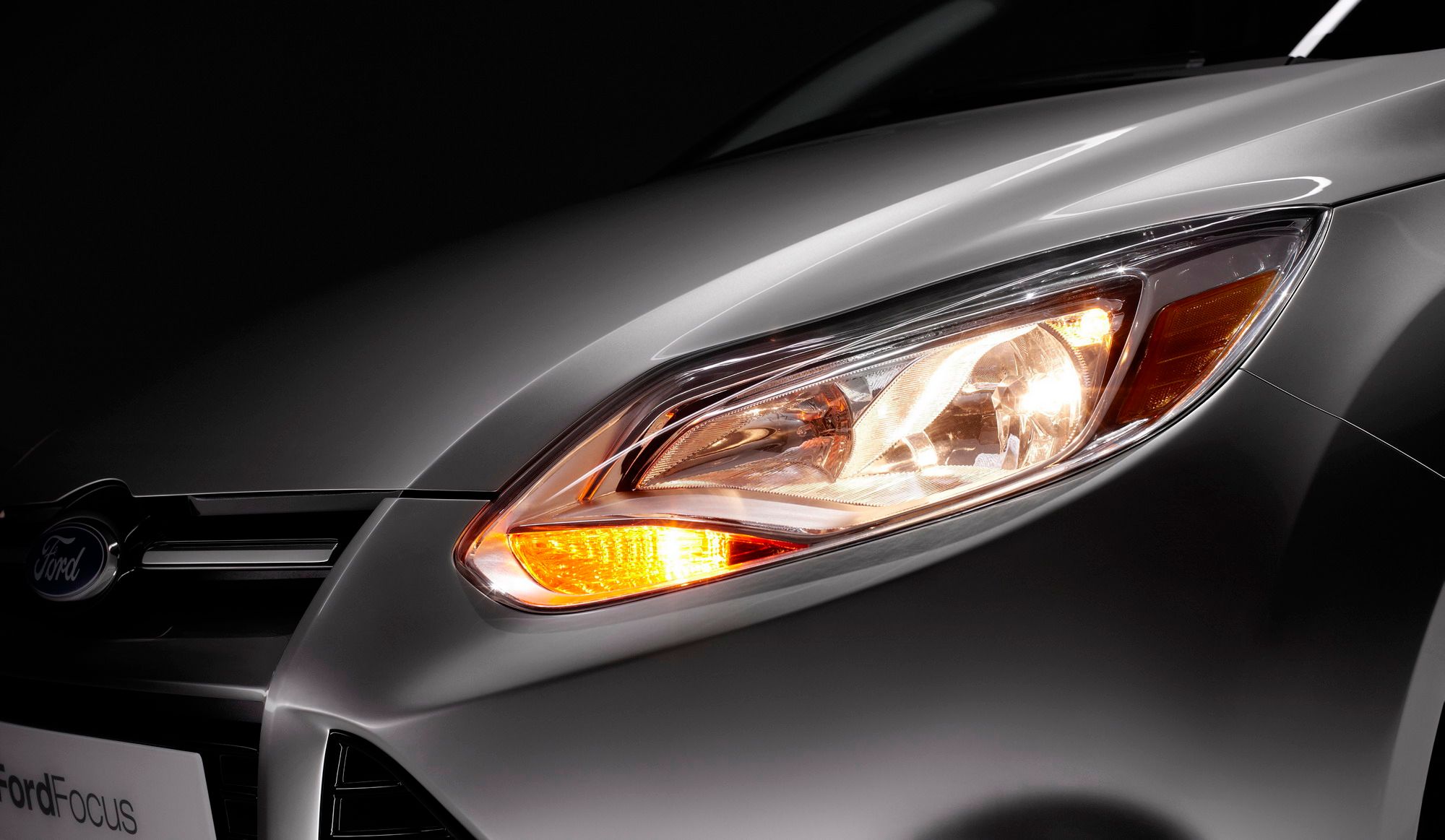 Most of the new technologies and features introduced with the C-MAX, plus further innovations, will cascade into future members of the new C-car family.
Most of the new technologies and features introduced with the C-MAX, plus further innovations, will cascade into future members of the new C-car family.
The Ford C-MAX exemplifies the benefits of platform diversification, providing a distinctive and stylish alternative with the same footprint as a traditional C-car.
In Europe, larger-package MAVs have grown to more than 30 percent of the C-segment volume once dominated almost solely by five-door models. The same trend has occurred in North America with the growth of crossover utility vehicles alongside traditional cars and sport utility vehicles.
“We believe that in North America, C-cars will migrate in the same way they migrated in Europe,” Kuzak said. “Customers have gone from four-door sedans to five-door hatches and moved into multi-activity vehicles, which provide more interior flexibility in a right-size vehicle. North America already recognizes this for Taurus- and Flex-size vehicles and for Fusion- and Edge-size vehicles. Why should Focus and C-MAX ultimately be any different from a customer point of view?”
Rightsizing without compromise
Demand for C-segment vehicles globally will come in part from a trend called “rightsizing,” in which customers – more conscious of fuel price instability, their own carbon footprints and their individual vehicle needs – are increasingly expected to choose vehicles in this segment as the right cars for them.
Those who stereotype small cars as basic are in for a surprise. Ford Focus and its C-car siblings will offer an array of features and technologies previously unavailable in this segment.
The new Ford C-cars were developed with an awareness of converging customer wants and expectations. Increasingly in some markets like the United States, C-sized vehicles are chosen by customers downsizing from larger cars due to sensitivity about fuel prices or reduced household size for some demographic groups.
“People downsize cars, not expectations,” said Kuzak. “Customers are increasingly making decisions to downsize driven by lifestyle and fuel economy. We’ve learned that when customers downsize, they still want the amenities they’ve become used to in larger vehicles. They want a small car that is fully featured with the right materials, craftsmanship and quality.”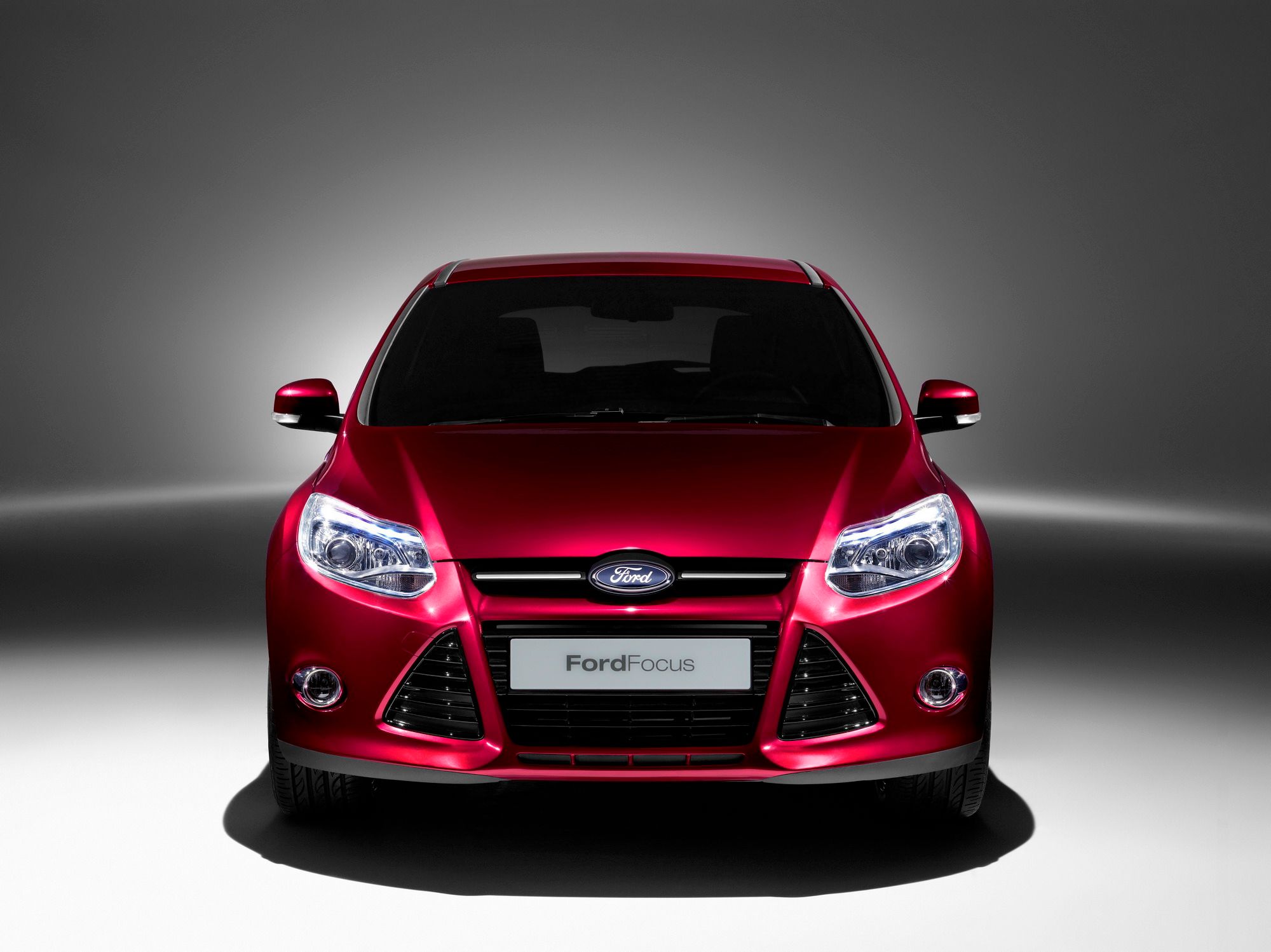 Ford expects Focus customers globally to continue a trend of wanting more in terms of features and creature comforts. In Europe, Asia-Pacific and Africa, customer orders for higher-specification models of the new Ford Fiesta have exceeded projections – an indication that even customers in value-oriented segments want to have entertainment, connectivity and feature benefits previously considered luxury car offerings.
Ford expects Focus customers globally to continue a trend of wanting more in terms of features and creature comforts. In Europe, Asia-Pacific and Africa, customer orders for higher-specification models of the new Ford Fiesta have exceeded projections – an indication that even customers in value-oriented segments want to have entertainment, connectivity and feature benefits previously considered luxury car offerings.
European excellence – global execution
Ford’s new C-vehicle family leverages more than Ford’s product development budgets. It also leverages product development expertise globally, resulting in even stronger levels of product commonality around the world.
The new range of vehicles is being created as the result of an unprecedented global development program that capitalizes fully on Ford’s best small car development talent. Ford of Europe, where the company’s key small car design and engineering talent is based, led the global development program as Ford’s small car center of excellence.
“From day one, the new generation of Ford C-cars was created as a global product,” said Gunnar Herrmann, C-segment vehicle line director, Ford of Europe. “It was created by one single team operating globally, with responsibility to deliver the next-generation Ford Focus and a family of vehicles in this size segment. This lead engineering vehicle team approach will be used for all of our global products moving forward.”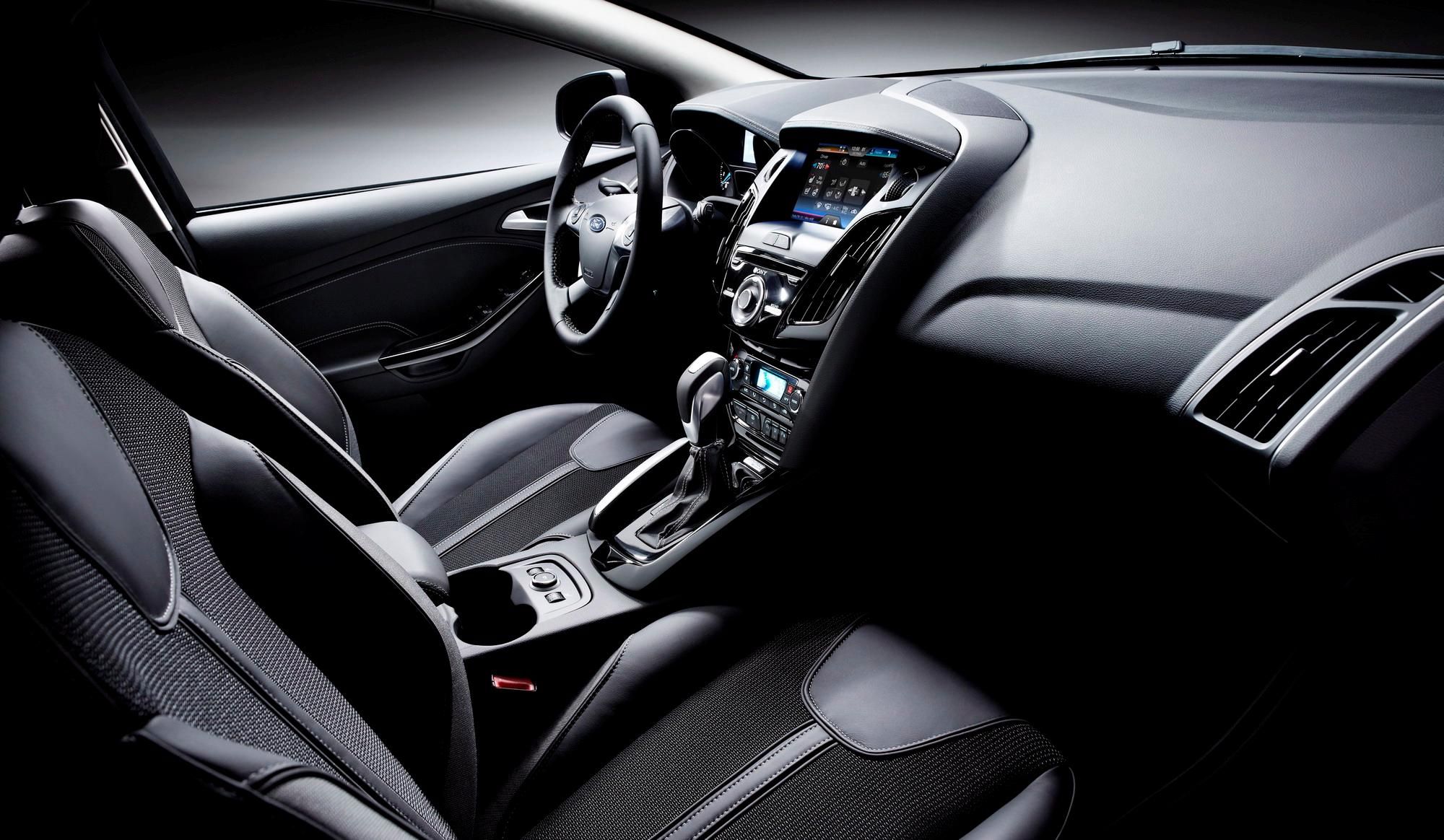 This approach enables higher degrees of global commonality, which will help Ford deliver for C-segment customers an array of available advanced technologies aimed at enhancing their convenience, comfort, safety and overall driving experience.
This approach enables higher degrees of global commonality, which will help Ford deliver for C-segment customers an array of available advanced technologies aimed at enhancing their convenience, comfort, safety and overall driving experience.
“Under our ONE Ford philosophy, we have been able to harness the talents of our global product development team in designing and developing vehicles for all markets,” said Kuzak. “With the efficiency and time-to-market speed of our Global Product Development System, Ford’s global team is bringing to our customers a worldwide family of vehicles that are truly exciting in design and packed with an unexpected level of features and technologies.”
The new way of working within Ford – spawned by the company’s ONE Ford strategy – broke down regional barriers that had previously resulted in different engineering standards that often caused unnecessary re-engineering of products and components.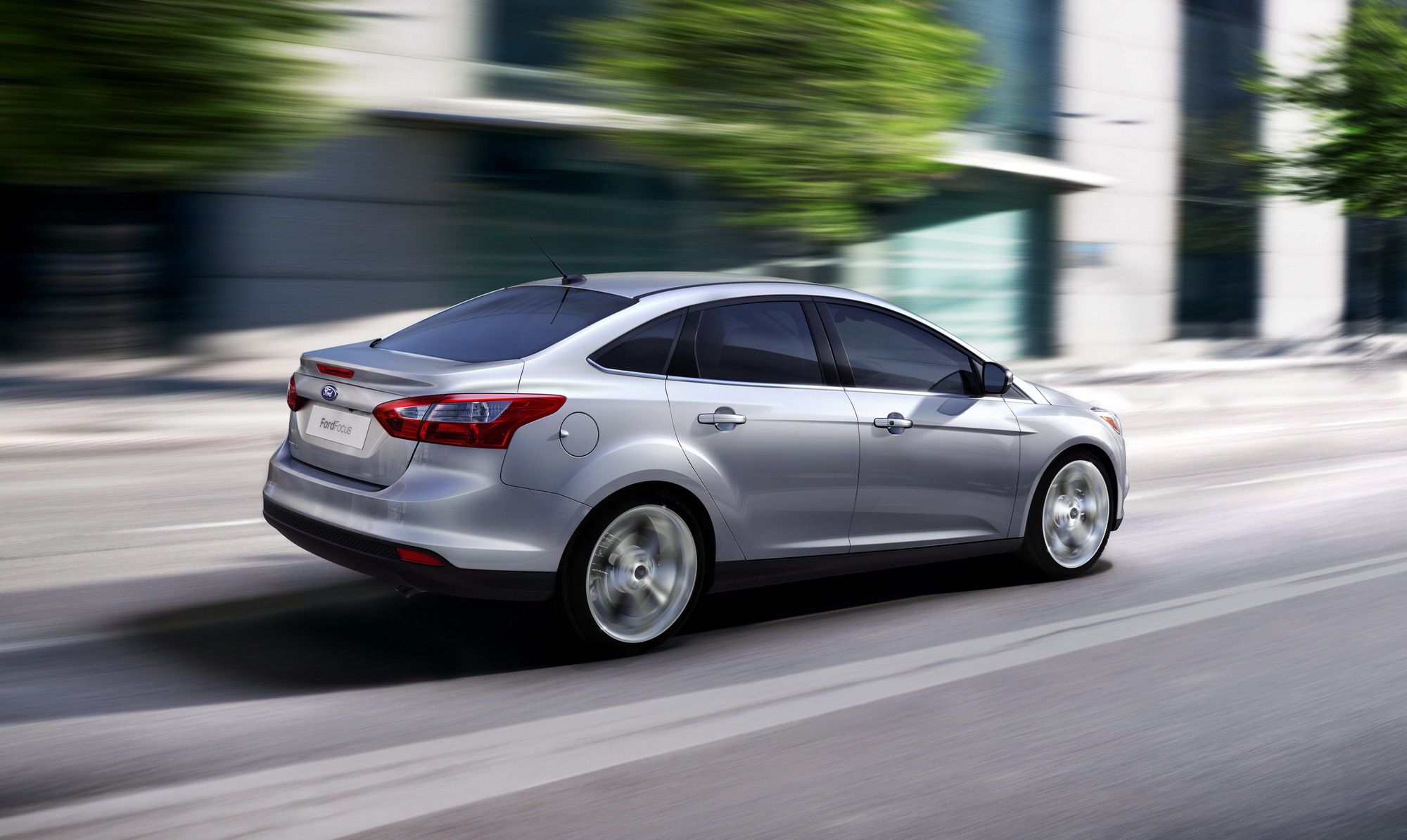 “Our team set global Ford DNA standards – incorporating the needs of all the key world markets – and ensured they would be applied, tested and measured with the same methodology,” Herrmann explained. “We’re all talking the same language, so the synergies are immense.”
“Our team set global Ford DNA standards – incorporating the needs of all the key world markets – and ensured they would be applied, tested and measured with the same methodology,” Herrmann explained. “We’re all talking the same language, so the synergies are immense.”
-----
Technologies
The reveal of the next-generation Ford Focus at the 2010 North American International Auto Show includes the first in a series of powertrain technology developments coming from Ford that give its new global C-segment leader a combination of power, exhilarating performance and unsurpassed fuel economy.
Ford has disclosed that North American models of the new Focus will be equipped with a responsive, fuel-efficient combination of a 2.0-liter I-4 engine with Twin Independent Variable Camshaft Timing (Ti-VCT) and direct injection (DI) plus a dual-clutch PowerShift transmission.
The new engine is designed to deliver an estimated 155 horsepower and 145 ft.-lb. of torque to give customers ample performance and a refined driving experience.
The 2.0-liter Ti-VCT I-4 also serves as another example of Ford delivering fuel economy leadership by using advanced technologies to produce surprising power from minimal displacement. The engine can deliver outstanding fuel economy and emissions along with the throttle response, performance and flexibility expected from a world-class engine.
“Using direct injection and Ti-VCT, and coupling that to a dual-clutch transmission, we’ve been able to make a quantum leap in fuel economy and performance,” said Derrick Kuzak, group vice president, Global Product Development. “We’re meeting the goals of our global powertrain strategy, and we now have another key powertrain for use around the world.”
Core engine technologies
As a DOHC design, the 2.0-liter I-4 uses two camshafts: one to open the intake valves and one to open the exhaust valves. Traditionally, camshafts have only been able to open the valves at a fixed point, defined during engine design and manufacture. But with modern variable cam timing systems, the camshafts can be rotated slightly relative to their initial position, allowing the cam timing to be advanced or retarded.
Ti-VCT takes this technology and applies it to both the intake and exhaust camshafts of its DOHC design, using electronic solenoid valves to direct high-pressure oil to control vanes in each of the camshaft sprocket housings. By using one oil control solenoid per camshaft, controlled by the Electronic Control Module, each intake and exhaust cam can be advanced or retarded independently of the other as engine operating conditions change, providing an exceptional degree of valve timing control.
“The overlap control via Ti-VCT helps us eliminate compromises in the induction and exhaust systems,” said Jamie Hanshaw, Ford VCT technical specialist. “Drivers will notice improved low-end power and better fuel economy. And there are benefits they won’t notice too, like reduced emissions overall, especially at part-throttle.” 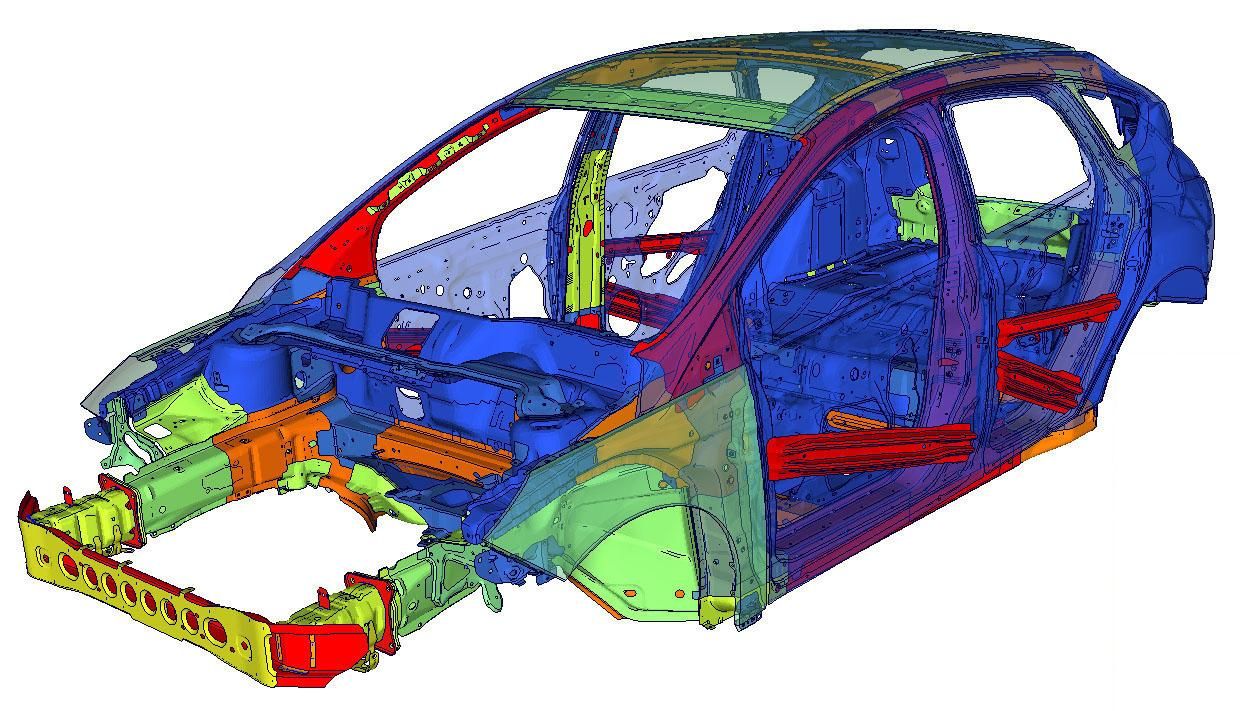 Fuel metering duties on the 2.0-liter I-4 are handled by a DI system that precisely delivers a fine mist of fuel directly into each cylinder for optimal performance, economy and emissions. Unlike port fuel injection (PFI) engines that spray fuel into the intake system, the direct injection system puts the fuel in the combustion chamber, exactly where it needs to be for combustion. Thanks to DI, the engine can safely operate at a high 12:1 compression ratio (compared with the current engine’s 10:1 ratio), further enhancing power and efficiency. And unlike most competitive direct injection systems, the engine will be E85 flex fuel-capable.
Fuel metering duties on the 2.0-liter I-4 are handled by a DI system that precisely delivers a fine mist of fuel directly into each cylinder for optimal performance, economy and emissions. Unlike port fuel injection (PFI) engines that spray fuel into the intake system, the direct injection system puts the fuel in the combustion chamber, exactly where it needs to be for combustion. Thanks to DI, the engine can safely operate at a high 12:1 compression ratio (compared with the current engine’s 10:1 ratio), further enhancing power and efficiency. And unlike most competitive direct injection systems, the engine will be E85 flex fuel-capable.
The high-pressure fuel injectors are positioned to the side of each cylinder, aiming the fuel directly into the cylinder adjacent to a high-intensity spark plug and alongside the intake and exhaust valves. Fuel is sprayed into the cylinders at pressures of up to 2,150 pounds per square inch, which is about 35 times more intense than PFI injection.
“The DI system creates an incredibly fine spray of gasoline that’s injected directly into the combustion chamber at the precise moment it’s needed, eliminating a lot of the compromises on traditional fuel systems,” explains Scott Makowski, I-4 engine manager. “It sounds simple, but months of testing and computer simulation went into finding the exact injector spray pattern, where in the cylinder to aim the spray, and even the piston dome design.”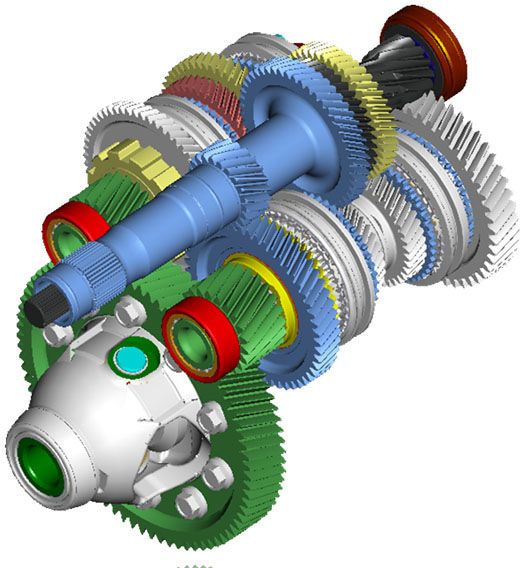 The Denso high-pressure fuel injectors use internal solenoids to precisely switch the flow of fuel on and off. Fuel flows through six tiny outlets – like pinholes – in each injector, and each spray is positioned to provide benefits in fuel economy and emissions. A sophisticated electronic control system varies the timing and intensity of the fuel delivery according to engine operating conditions.
The Denso high-pressure fuel injectors use internal solenoids to precisely switch the flow of fuel on and off. Fuel flows through six tiny outlets – like pinholes – in each injector, and each spray is positioned to provide benefits in fuel economy and emissions. A sophisticated electronic control system varies the timing and intensity of the fuel delivery according to engine operating conditions.
Attention to detail yields fuel economy improvements
Complementing the efficiencies introduced by Ti-VCT and DI, every aspect of the proven 2.0-liter I-4 was examined to identify ways fuel economy could be improved. Key strategies focused on reducing internal engine friction and reducing overall weight.
Computer modeling indicated areas where friction reduction strategies would pay the most dividends. The valvetrain received a fine surface treatment to present the smoothest surface possible. Piston skirts are treated with a special low-friction coating, and the oil pump and its drive ratio are sized for the exact capacity requirements of the new 2.0-liter engine.
Accessory drive friction was also reduced through a series of actions. Electric Power Assist Steering eliminates the drag of an engine-driven power steering pump, while the use of so-called stretchy belt technology removes friction in the form of a belt tensioner on the air-conditioning compressor drive system.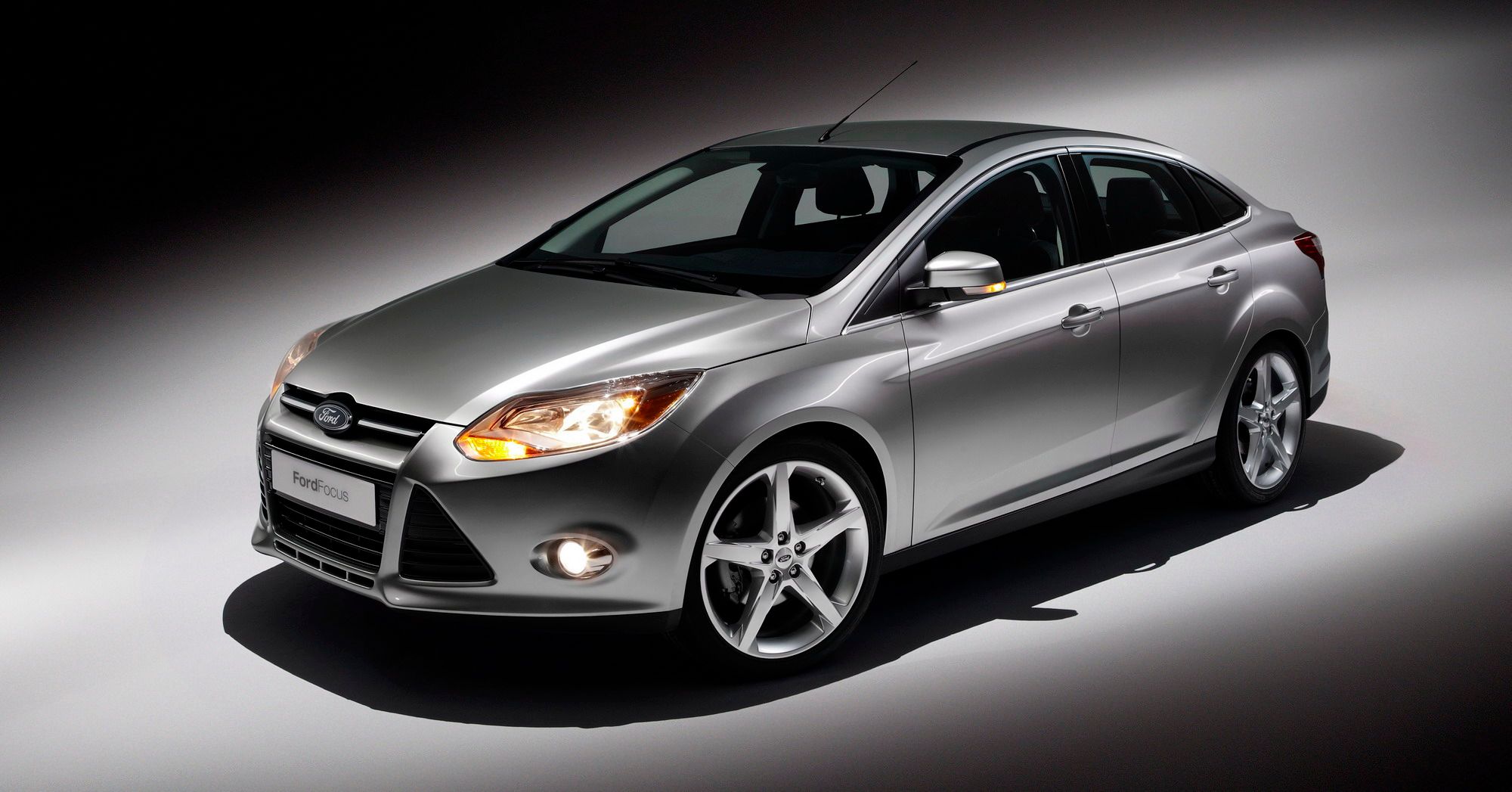 Additionally, an overriding alternator decoupler – essentially a special pulley that reduces certain types of vibrations – allows the alternator and water pump drive belt to operate at a much lower tension than is typically used, further reducing frictional losses.
Additionally, an overriding alternator decoupler – essentially a special pulley that reduces certain types of vibrations – allows the alternator and water pump drive belt to operate at a much lower tension than is typically used, further reducing frictional losses.
To keep overall powertrain weight as low as possible, the block, cylinder head and oil pan – traditionally the heaviest engine components – are aluminum castings. To increase rigidity, these elements are ribbed for additional strength and durability. Pistons are cast aluminum as well, with the light weight helping to reduce reciprocating mass.
Composite material is employed to keep intake manifold weight to an absolute minimum, while allowing for induction routing to increase thermal efficiency and improve low-end torque characteristics.
PowerShift: A different kind of automatic
An all-new PowerShift six-speed automatic transmission that combines the responsive performance and fuel economy of a manual gearbox with the convenience of a traditional automatic transmission promises to be another key Focus powertrain technology.
“PowerShift is a transmission that changes the game,” said Samardzich. “Our fuel economy leader is now a PowerShift automatic. Previously, a C-segment driver needed a manual transmission and a clutch pedal to enjoy the greatest fuel efficiency.”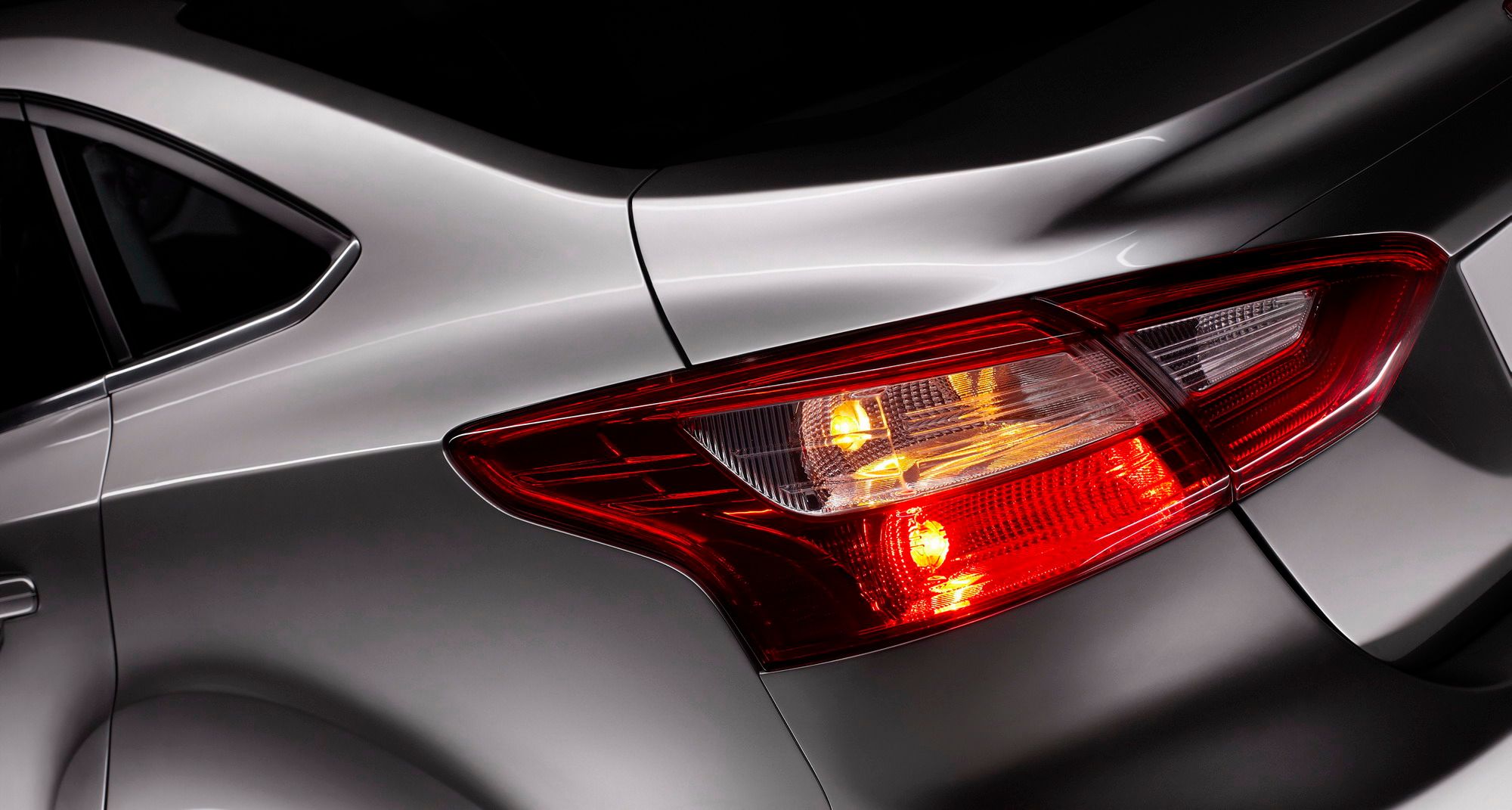 Twin internal clutches keep the PowerShift in constant mesh, continuously optimizing for maximum responsiveness and fuel efficiency, depending on engine speed, vehicle speed and input from the driver’s foot on the accelerator pedal. The new technology provides significant fuel economy improvement, and for the driver, it retains the operational ease of an automatic with noticeably quicker and smoother shift quality.
Twin internal clutches keep the PowerShift in constant mesh, continuously optimizing for maximum responsiveness and fuel efficiency, depending on engine speed, vehicle speed and input from the driver’s foot on the accelerator pedal. The new technology provides significant fuel economy improvement, and for the driver, it retains the operational ease of an automatic with noticeably quicker and smoother shift quality.
PowerShift is a dual dry clutch transmission, operating with sealed internal lubrication, reducing friction and contributing to Focus fuel economy improvements. The lack of pumps and hoses reduces complexity, saves weight and contributes to fuel efficiency.
An additional feature is Hill Start Assist functionality. This sensor-based system will “hold” the brakes for an instant (2.5 seconds) to prevent rollback when stopping or starting from rest on an incline. Employing a digital accelerometer to measure slope incline, the system activates automatically when the incline exceeds 3 percent.
Simpler, more responsive and more fuel-efficient than a conventional automatic transaxle, PowerShift represents an innovative small car breakthrough.
Continuing refinement on the global stage
Using the 2.0-liter Ti-VCT engine and PowerShift dual-clutch transmission in the North American market, combined with state-of-the-art common-rail diesels for global customers, Focus is poised to claim a leadership role in fuel economy from the moment it’s launched. This powertrain will not be marketed in Europe.
The global powertrain lineup for the new Focus also will include a range of state-of-the-art Ford EcoBoost™ four-cylinder turbocharged direct injection engines – including the 1.6-liter unit in Europe and a choice of advanced and improved Duratorq TDCi common-rail diesel engines, all of which offer reductions in fuel consumption of between 10 and 20 percent compared to the outgoing models.
“When the new Focus launches in late 2010, it will be among the global leaders in fuel economy and CO2 emissions,” said Kuzak. “We will continue to pioneer new technologies beyond launch, including a true zero-emission model launching in North America in 2011. Throughout its life cycle, Focus in all forms, in all regions, will demonstrate the Ford commitment to deliver unsurpassed fuel economy on a truly global scale.”


